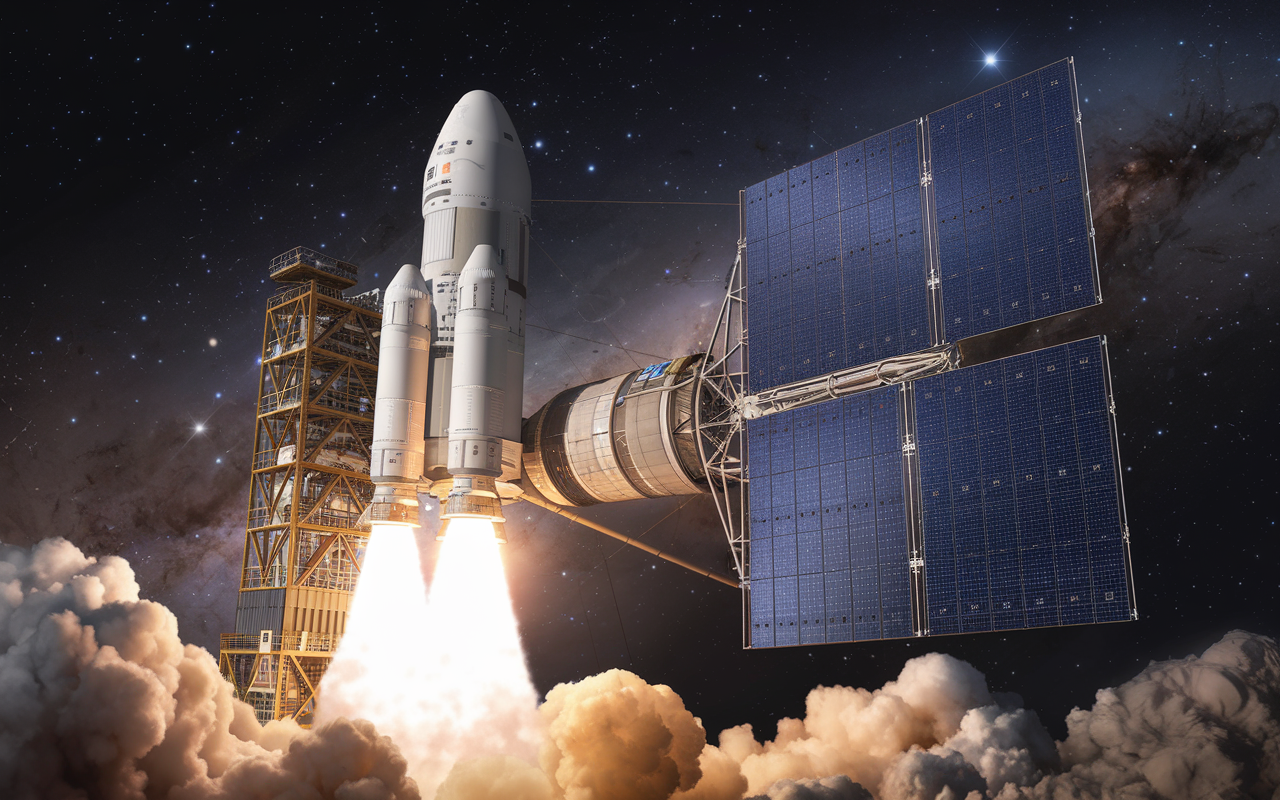🚀 K2 Space Takes a Giant Leap: Extra-Large Satellite to Launch in 2026! 🌌
Exciting news is bubbling in the world of space exploration! K2 Space, an ambitious startup, is set to fly its first extra-large satellite mission, named Gravitas, in February 2026. This monumental leap comes with a hefty $60 million contract to carry several Department of Defense payloads, marking a pivotal moment for both the startup and the future of space hardware.
The Future is Big – Literally! 📏✨
K2 Space is betting on a future where satellites are not just larger in size but also super-efficient in terms of cost and production. Their Mega class satellite features an impressive 3-meter-by-3-meter payload bay, allowing them to significantly cut down satellite production costs to below $15 million each. This is a game-changer! 🎉
Co-founders Karan and Neel Kunjur are introducing this vision based on the assumption that launch costs will continue to drop, thanks to advances like SpaceX’s Starship and other heavy-lift vehicles. 🚀💰 The company's focus on large spacecraft aligns perfectly with recent trends in government space activities, especially concerning national security.
Navigating New Orbits 🎯🛰
What makes K2 Space’s mission truly fascinating is its operational strategy. The Gravitas satellite will initially perform tasks in Low Earth Orbit (LEO) before adjusting to Medium Earth Orbit (MEO), a notoriously challenging area for spacecraft. 🌍✨ Kunjur highlighted that "MEO offers another level of resilience," emphasizing a strategy that integrates satellites across multiple orbits, enhancing operational capabilities.
Manufacturing Revolution: K2's Blueprint 🔧🏭
A standout feature of K2 Space's approach is their commitment to in-house manufacturing. The company is crafting essential spacecraft components such as reaction wheels, flight computers, and solar arrays, ensuring that they can mass-produce these vital elements cost-effectively. This strategic pivot toward self-sufficiency is not just smart; it reflects a forward-thinking approach aimed at overcoming current supply chain hurdles. 🔄📦
Kunjur describes this initiative as deliberately designed for scalability, stating, “It’s not just about one satellite; it’s about building a line where the first unit seamlessly transitions into the next one.” This mindset could very well accelerate the entire space industry’s production capabilities.
Why This Matters 🌏🚀
The implications of K2 Space’s advancements transcend just the company itself. This could lead to a renaissance in satellite architecture and production methods, making space more accessible than ever! 🌟 With government agencies and private investors backing this vision, we may be witnessing the dawn of a new era in space exploration—one where large satellites become a norm rather than an exception.
With its innovative plans and robust financial backing, K2 Space is positioning itself at the forefront of the aerospace industry. Mark your calendars for early 2026 – it's bound to be a launch to remember! 🗓️🚀
What are your thoughts on the future of satellites and space exploration? Share your ideas below! 👇💬
#SpaceExploration #SatelliteInnovation #K2Space
For further information, you can check the original article on TechCrunch.

More Stories
Meta’s AR Ambitions and AI Safety: Insights from the Equity Podcast
Insight Partners Data Breach: A Wake-Up Call for Cybersecurity Awareness
Lovable’s Ascendancy: Anton Osika at TechCrunch Disrupt 2025